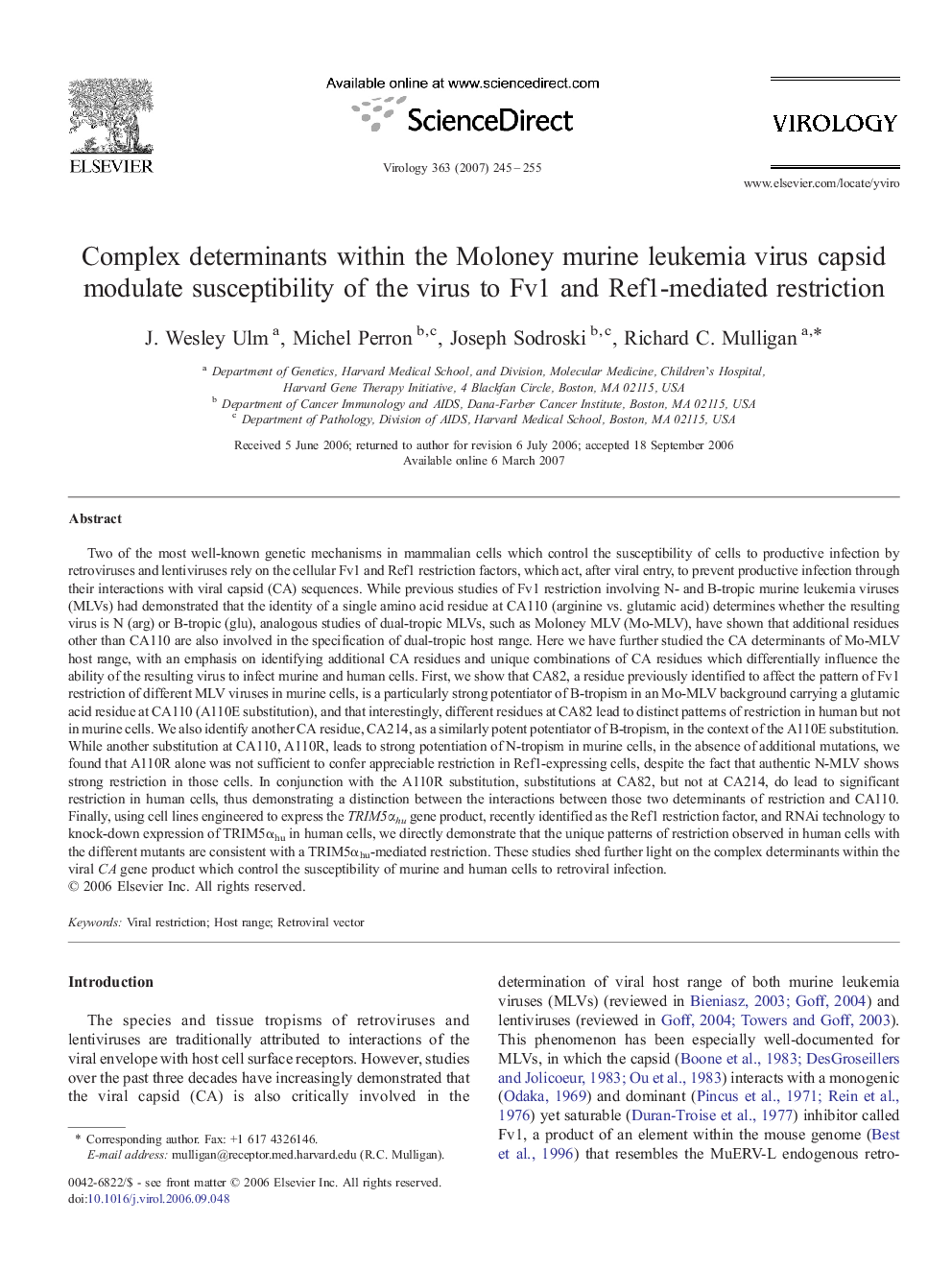| کد مقاله | کد نشریه | سال انتشار | مقاله انگلیسی | نسخه تمام متن |
|---|---|---|---|---|
| 3426871 | 1227349 | 2007 | 11 صفحه PDF | دانلود رایگان |

Two of the most well-known genetic mechanisms in mammalian cells which control the susceptibility of cells to productive infection by retroviruses and lentiviruses rely on the cellular Fv1 and Ref1 restriction factors, which act, after viral entry, to prevent productive infection through their interactions with viral capsid (CA) sequences. While previous studies of Fv1 restriction involving N- and B-tropic murine leukemia viruses (MLVs) had demonstrated that the identity of a single amino acid residue at CA110 (arginine vs. glutamic acid) determines whether the resulting virus is N (arg) or B-tropic (glu), analogous studies of dual-tropic MLVs, such as Moloney MLV (Mo-MLV), have shown that additional residues other than CA110 are also involved in the specification of dual-tropic host range. Here we have further studied the CA determinants of Mo-MLV host range, with an emphasis on identifying additional CA residues and unique combinations of CA residues which differentially influence the ability of the resulting virus to infect murine and human cells. First, we show that CA82, a residue previously identified to affect the pattern of Fv1 restriction of different MLV viruses in murine cells, is a particularly strong potentiator of B-tropism in an Mo-MLV background carrying a glutamic acid residue at CA110 (A110E substitution), and that interestingly, different residues at CA82 lead to distinct patterns of restriction in human but not in murine cells. We also identify another CA residue, CA214, as a similarly potent potentiator of B-tropism, in the context of the A110E substitution. While another substitution at CA110, A110R, leads to strong potentiation of N-tropism in murine cells, in the absence of additional mutations, we found that A110R alone was not sufficient to confer appreciable restriction in Ref1-expressing cells, despite the fact that authentic N-MLV shows strong restriction in those cells. In conjunction with the A110R substitution, substitutions at CA82, but not at CA214, do lead to significant restriction in human cells, thus demonstrating a distinction between the interactions between those two determinants of restriction and CA110. Finally, using cell lines engineered to express the TRIM5αhu gene product, recently identified as the Ref1 restriction factor, and RNAi technology to knock-down expression of TRIM5αhu in human cells, we directly demonstrate that the unique patterns of restriction observed in human cells with the different mutants are consistent with a TRIM5αhu-mediated restriction. These studies shed further light on the complex determinants within the viral CA gene product which control the susceptibility of murine and human cells to retroviral infection.
Journal: Virology - Volume 363, Issue 2, 5 July 2007, Pages 245–255